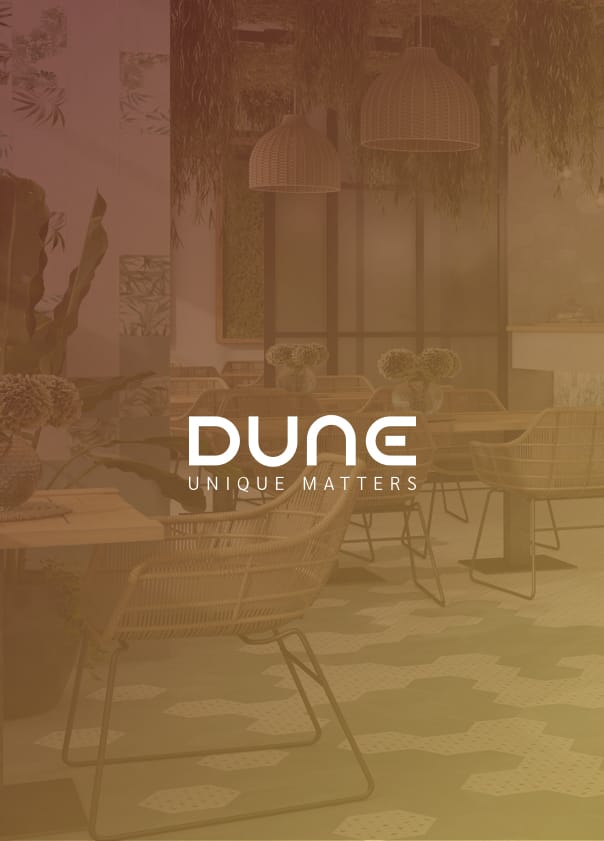Categoría:
Trends&Matters
11/08/2016
SENSE CERAMICS WITH EPHEMERAL VISIONS
In this article we talk about:
Ephemeral visions, exclusively designed by Heva* Design for DUNE Heva* Design is an Architecture and Design Studio formed by architects Helia San Nicolás and Vanessa Molina. They seek to bring out the multidisciplinary character of architecture and design. Heva* Design therefore not only creates building projects but, from a completely original almost revolutionary perspective, they reinvent women’s accessories, designed as architectural miniatures in which materials from the construction industry such as mosaic chips or ceramics are intermingled with materials from the textile industry.
The innovative hallmark that marks their designs was recently awarded the special Prize for Innovation in the 17th Awards of Architecture of the Region of Murcia, a recognition that highlights the experimental nature of their projects. The appeal of this collection is based on the different optical perceptions that users experience when approaching a surface, as well as the impact of light, ephemeral visions that in essence, bring materials to life.
Ephemeral Visions brings the user not just optical but also tactile sensations, enriching the experience of interaction between him or her and the product. The surface is therefore no longer understood as a mere canvas for static contemplation, but as a sensory experience for the user. Thanks to the different changing parameters the incoming light, the observer’s position and/or the shades, pieces can seem to be made of different materials, giving us temporary optical illusions.
Ephemeral Visions is an innovative collection consisting of three products: Folding Elements, Alea, and Identity FOLDING ELEMENTS For the design and construction of this first model, Heva* Design started from the premise that ceramic pieces are usually static when attached to a structure, and remain so throughout their useful life. The aesthetic solution to this obstacle was to apply the technique of a folding surface, intensifying the surface relief and giving the user two alternative views on approaching the piece: the chromatic and the textural. The serial repetition of this process creates a surface with areas of light and shade. This was the origin of the four Folding Elements models: Folding Gold, Folding Silver, Folding Flowers and Folding Roses. The sensory experience created in each piece depends on how the customer approaches it: depending on the direction of approach, the user's perspective will make him or her perceive different colours, textures or even shapes in the pieces.
FOLDING ELEMENTS
The Folding Flowers model has faces sloping in the same direction, with decoration based on floral motifs that imitate the watercolour technique, while from the opposite direction, the parallel faces show typographic designs chromatically matching the floral motifs. In Folding Roses, the whole piece has a finish with floral motifs over a homogenous coloured background designed to imitate oil painting. The contrast comes from the surface treatment, with a granulated texture in one direction and transparent vitreous paste in the other.
Folding Gold. In this case, the piece has been decorated with a metallic coating using the PVD (physical vapour deposition) technique, in monochrome gold tones that give it a plain, shiny finish on one face and in contrast on the other, transparent vitreous paste has been used to impart roughness and a matt finish. Conversely, in the Folding Silver model, a PVD silvered metal coating has been used. Then as above, one face is given a plain, shiny finish and on the other transparent vitreous paste imparts roughness and a matt finish.
ALEA
Alea is a modern and striking model with fine hand-brushed aluminium listels whose incredible sparkling surface constantly changes with the light. This varying sensory response whose impact depends on the dynamics of the light gives spectators the impression that it changes as they move. The texturised treatment of the Alea pieces brings enrichment to their observers’ perception of them, conveying the idea of a varying surface rich in reflections that change as the user moves around. This model comes in two patterns: Alea Grey, combining several tones of aluminium grey. Alea Copper, giving off reflections of reddish light.
IDENTITY
Identity Glass combines glass thermoformed by vitro-fusion (fusing) using the “antiqued mirror” decorative technique, a resource used in decorative mirrors to give them an antique appearance. This involves the deposit on the mirror’s surface of materials like silver, gold, copper, cobalt and nickel, combining to allow the piece to reflect practically all shades of the rainbow. The artisan nature of the process and the interaction of the metals achieve a chromatic richness impossible to obtain by other techniques. In fact, it is these little-known artisan processes which demand such care and precision that make each piece unique. Every panel made from these pieces is characteristic and exclusive.
















